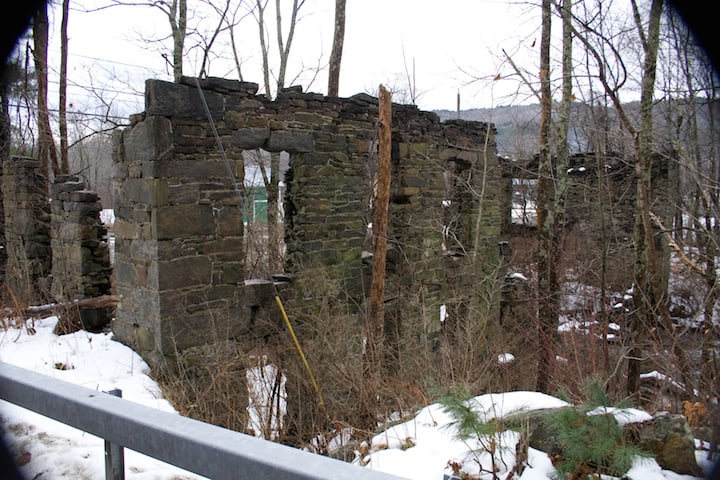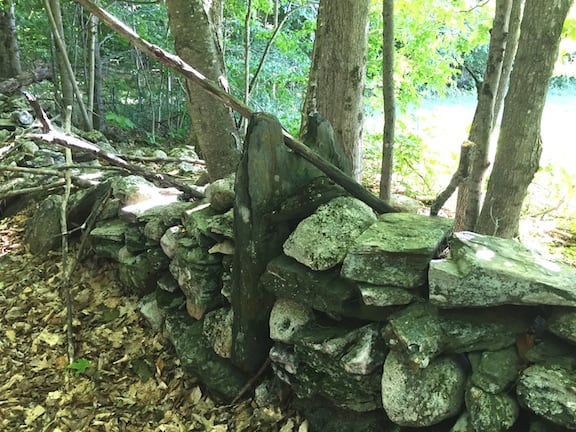
I’m looking for some history that so far eludes me. I’m hoping a reader can help me out.

Cambridgeport
Over in Cambridgeport stand the ruins of the old stone woolen mill. These stone ruins have stood for decades. When was it last used as a mill and by whom?
My father told me when he was a boy he rode his bicycle from Springfield over to the stone mill to go fishing. His route from Springfield: out Route 11 toward Chester, left on the Pleasant Valley Road to lower Bartonsville, through the covered bridge to Route 103, turn right up to Upper Bartonsville, and follow the Cambridgeport Road over to the stone mill. I estimate 18 to 20 miles each way.
Can you imagine peddling an old coaster brake, single-speed bicycle from Springfield to Cambridgeport over mostly dirt roads in 1932? Dad said the mill was in ruins at that time. The furthest I ever rode my 24-inch coaster bike to go fishing was from High Street in Chester down Route 103 to the truck stop just this side of the Vermont Country Store. Here I walked down to the swimming hole below Brockway Mills gorge. This might have been seven or eight miles each way but blacktop all the way.
If you know any of the history, including owners or previous uses, I’d like to hear from you. Kathy Goodell’s maternal grandparents owned the mill at one time.
Skyline Drive
Just off Skyline Drive in Weathersfield is a most unusual stonewall. My daughter Carrie and her husband Vince live on Skyline Drive with their twin sons, Ian and Evan. This past June, my grandsons turned 6 years old. A large birthday party was held at Carrie’s place.
My son Shawn, his wife Paula, and my granddaughters Josie and Samantha drove up from North Carolina. This birthday party coincided with Shawn’s 30th class reunion from Springfield High School.
At the party, Shawn asked me what I knew about stonewalls built with upright stones. “Show me what you mean,” I said to Shawn.
We went out on Carrie’s property to see the wall. I’ve seen thousands of stonewalls in my life, both in the woods and alongside old roads. I have never seen this wall construction before.
It’s a typical stonewall with one exception: every 10 feet or so there’s an upright stone. Some of these uprights begin at ground level. Others are built in half way up the wall. These uprights extend 10 or so inches above the top of the wall.
“Why?” I wondered. I have two theories.

First
When the walls were built in the 1840s, it was faster and more economical to build the walls shorter in height. The evenly spaced upright stones have a rounded notch cut in their top edge. Across the notches a wooden pole or rail was laid to rest in the notches on each supporting end. This rail would raise the height of the wall to proper height to keep sheep or cows in the pasture. If you look at the photo with this article, you can see a limb has fallen into a notch.
Second
My second theory is when the wall was built it was about four feet high as walls of that day were. The notches on the uprights were used the same way as I described before with a rail creating a wall as much as five feet high. The higher walls were for keeping horses from jumping the fence. No, I don’t know if either theory is the case, but both are plausible.
Do you know?
I’m wondering if anyone has seen walls built this way elsewhere in Vermont. It is possible a local wall builder used his individual technique. If he was local, there may be other walls built the same way in the Weathersfield area.
I’m hoping there’s a descendant of the Cambridgeport Mill who will read this article and be able to fill in the blanks for me. When was it built, and how many times was it rebuilt after fires? What kind of the wool did they produce, and where was their market? And what year was it abandoned?
I’ve always been fascinated with old cellar holes and stone ruins. This old mill is a beautiful ruin. Feel free to contact me.
This week’s old saying is from Thomas Paine: “To argue with a person who has renounced the use of reason is like administering medicine to the dead.”